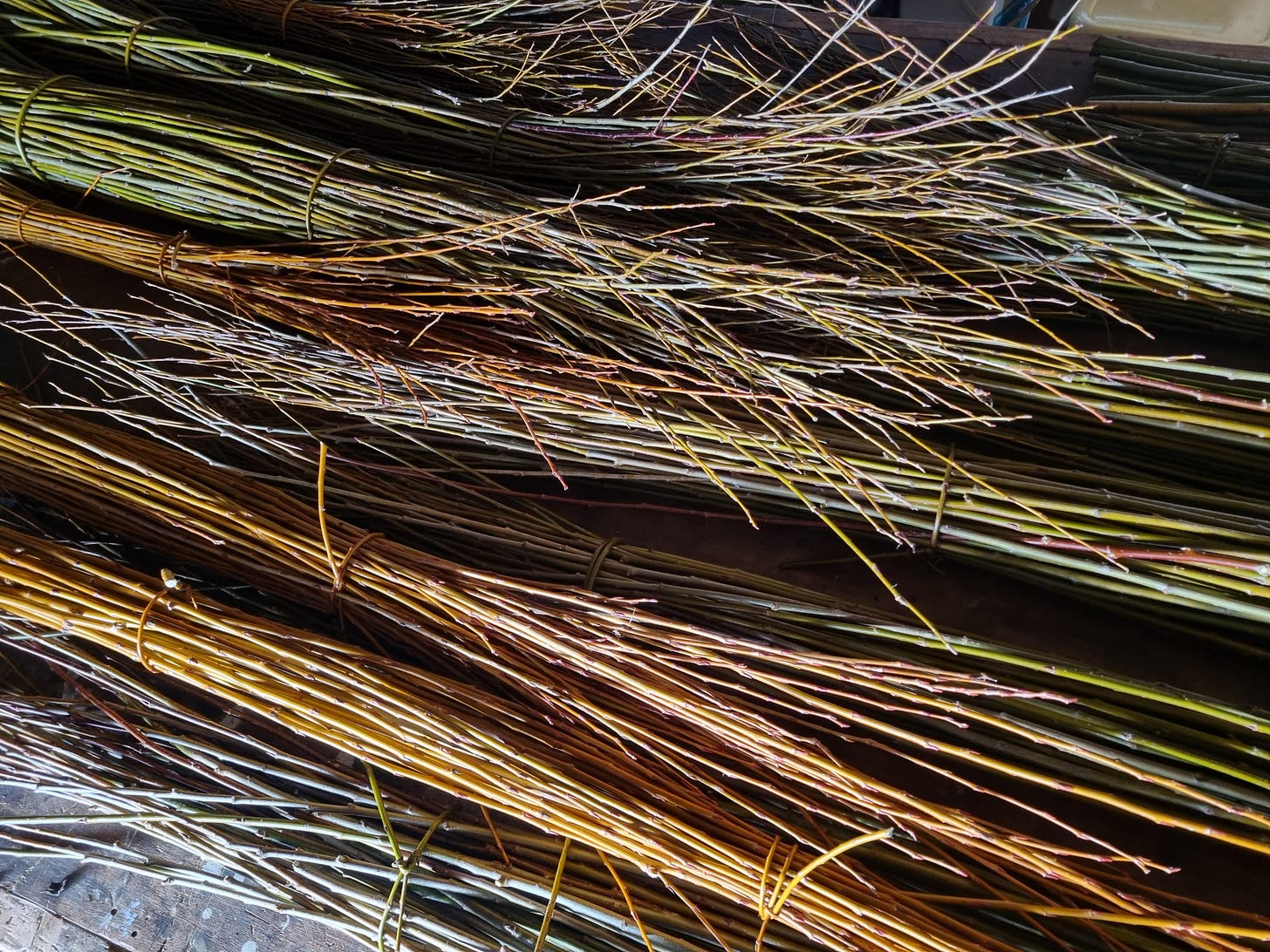various Bearded Iris anthotype printing
In my original post on anthotype printing I mentioned that you can modify the colors of your plant pigments by adding various acids and bases to your original color (plant pigment). Above are a few examples after leaving them in the Winter sun for a day or two. I will keep them as examples to use when teaching, storing them in a dark box as the UV rays don’t remove more of the color.
Yesterday I pickled some beets/beetroots that a friend gifted me and when I was finished boiling the beets I decided the resulting pink liquid might work well for anthotyping. Below are the results - so pretty! Once the rain stops here on the Far South Coast of New South Wales, I will expose them and let you know the results.
Beet/beetroot ink with various modifiers - bluestone (copper sulfate), lemon juice, detergent and alum (potassium aluminum sulphate). Also found mushrooms and lichen for future dyeing projects.
As a side note about Bearded Irises - they make lovely cordage/twine. Whenever I see a bunch of the leaves turning yellow and brown in the garden, I collect them and allow the leaves to dry completely before storing them in a basket in the house.
When I’m ready to make the twine, I soak the long leaves until they feel wet enough to work with. Once ready, I place them in a towel to keep them moist while I twist the fibers into cordage. Be sure to only wet as much fiber as you will use on that day, as re-wetting them doesn’t produce nice results (they tend to break).
The cordage below is still wet; I will allow it to dry completely before storing. The color will lighten upon drying, but you will still see the variegation in the leaves. It is best to coil them as shown so that the fibers get used to going in a particular direction and therefore cooperate when you go to use them in a coiled basket. Store your cordage in a breathable place (I use previously-made baskets) until you have enough to finish a project.
Breaded Iris cordage/twine
Willow for Basketry
Last weekend my partner and I collected willow from our local creek to make into baskets in the Spring once the switches have dried out a bit (FYI -they will shrink about 10%). The colors are beautiful! Particularly the yellow. We weren’t able to find any red this time, but we’ll keep looking…
foraged Willow switches grouped into bundles by color and length (quite a lot of work my partner put into this)
Analog Project - Business Cards
In a previous article entitled Analog, I discussed a project I wanted to start, but as of yet, haven’t - making my own business cards by hand. I really will start this week; actually, I already have…I made acorn ink to use for the calligraphy/writing. You can read about the process in the same article just mentioned. Now, I just need to make the following:
Gum Arabic to thicken the ink and watercolor paints
watercolor paint in red/pink
cut out business cards from thick watercolor paper
make a wood-carved stamp of my beetroot logo
I intend to stamp each card with my logo and name on the front, then contact details on the back, simple and clean.
There’s a similar idea from a book I recently found at a second-hand place, Print Workshop by Christine Schmidt, where you make your own deck of playing cards….I might do this project, too!
My current reading and watching that you might enjoy
An Agrarian Prayer by Hadden Turner on Front Porch Republic
The Living Library Apocalypse by Hadden Turner on his Substack, Over the Field
Waldorf Handwork Educators’ Video Library, includes knitting socks, making dolls, felting, dyeing, broom-making and more
One Thousand and One Nights by Hanan al-Shaykh (a new telling of The Arabian Nights stories)
Enjoy - Nx








So beautiful Nikki! I would love to try this one day.